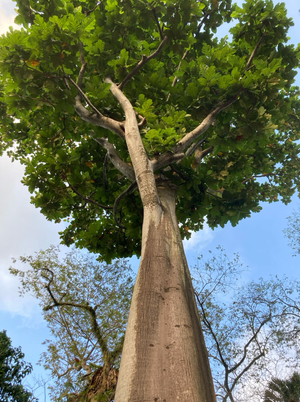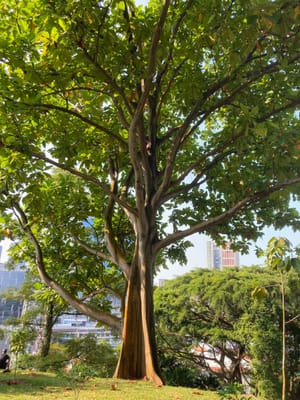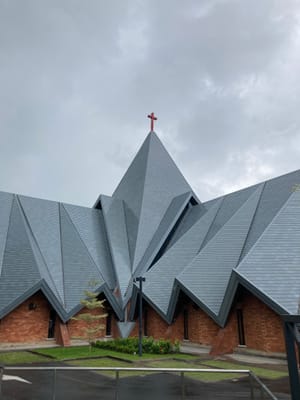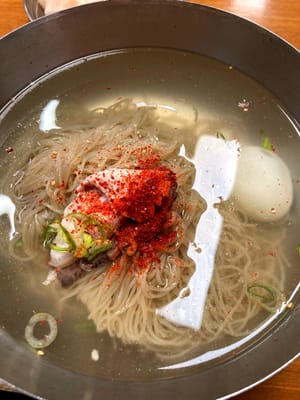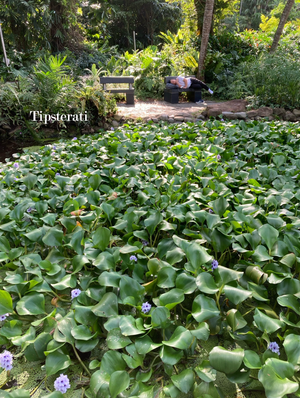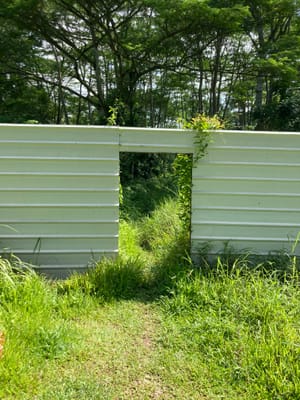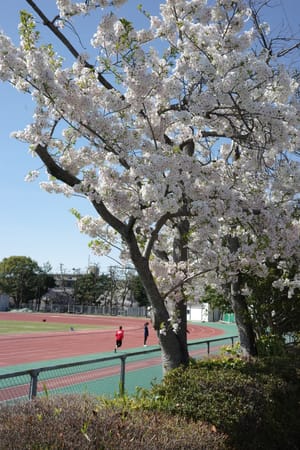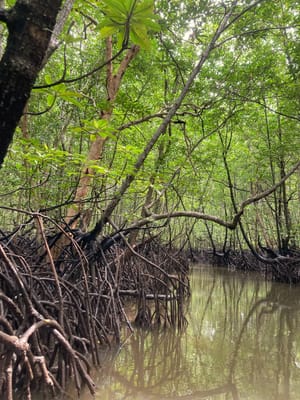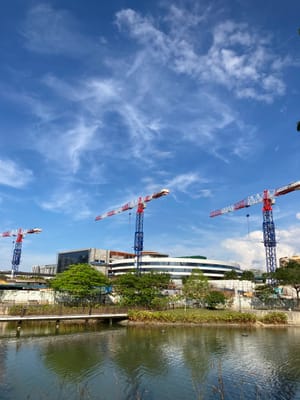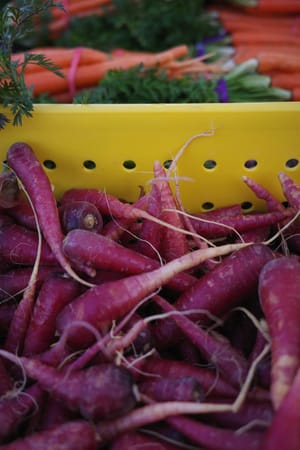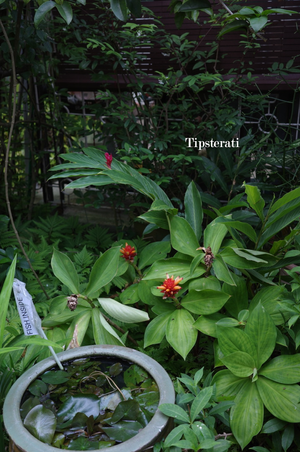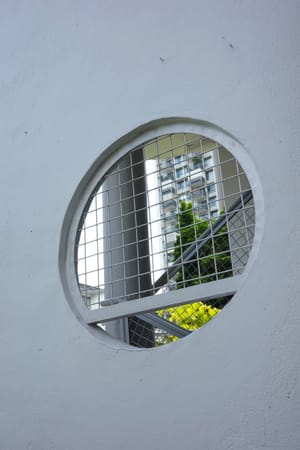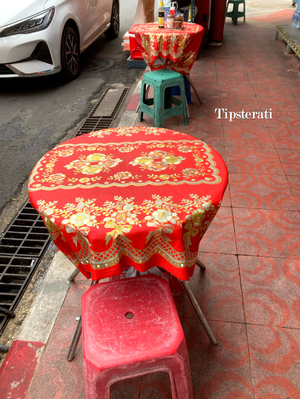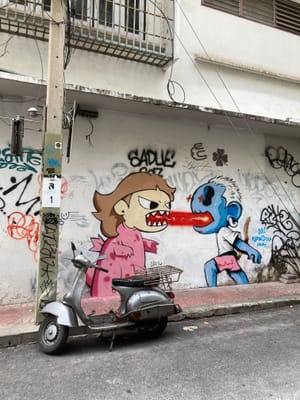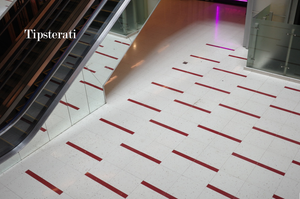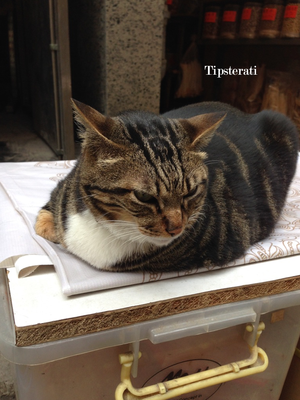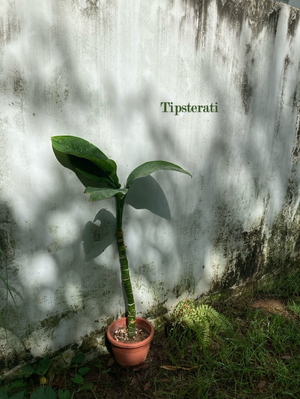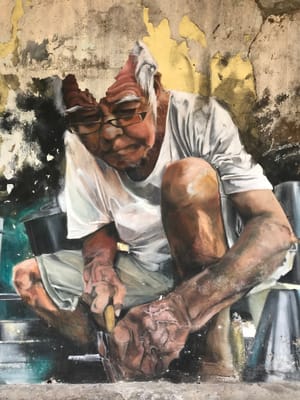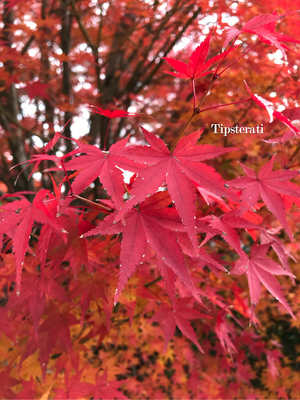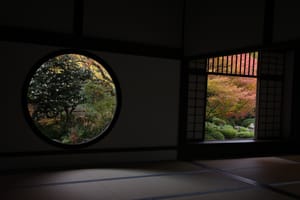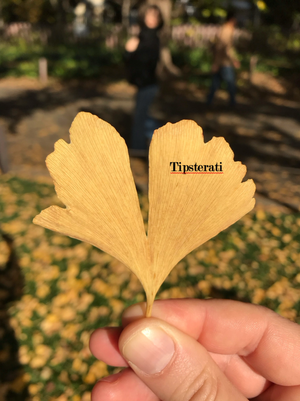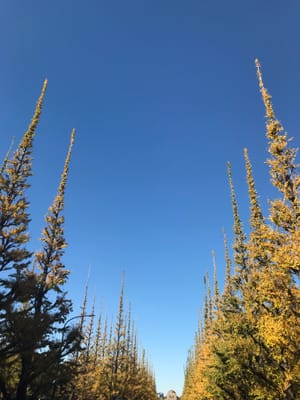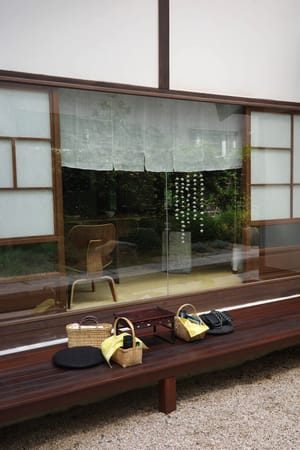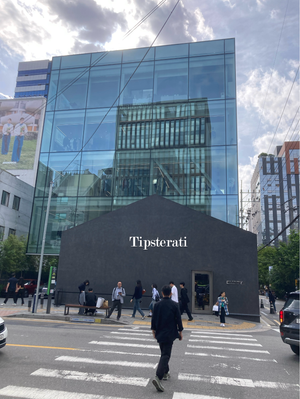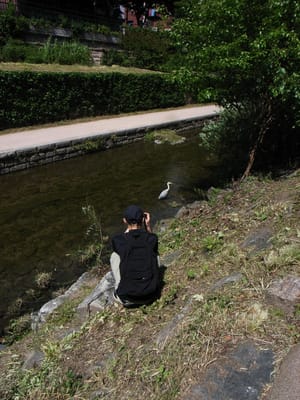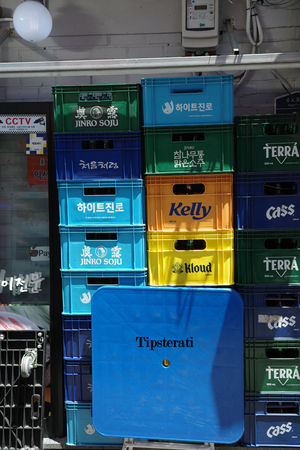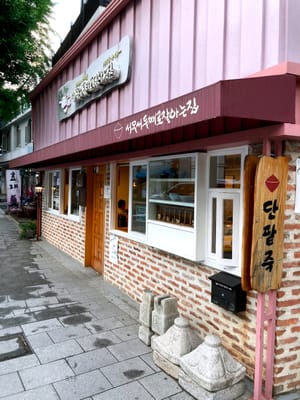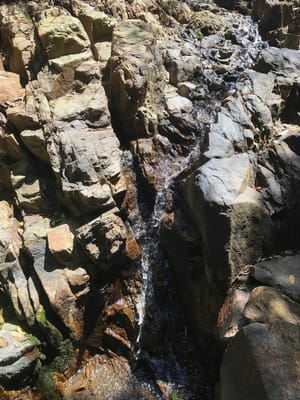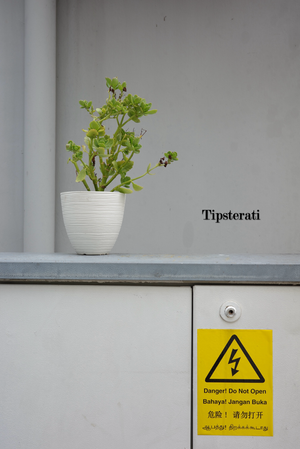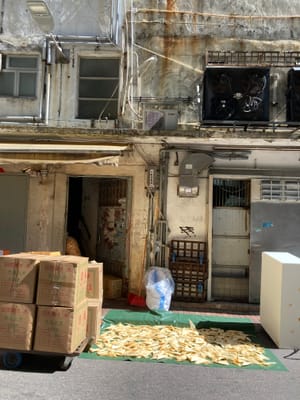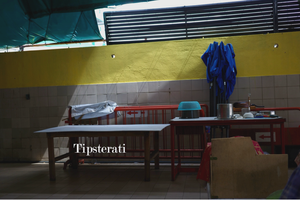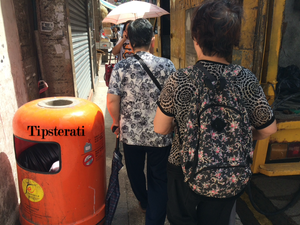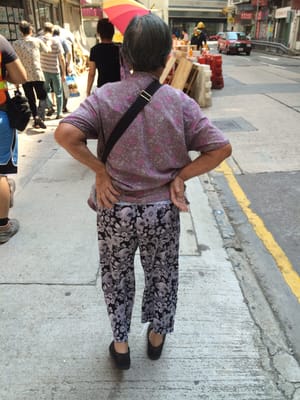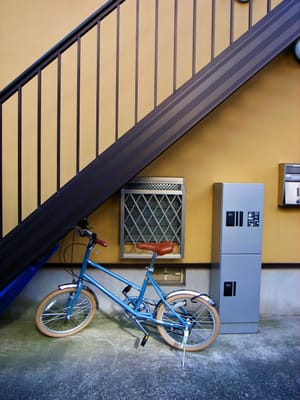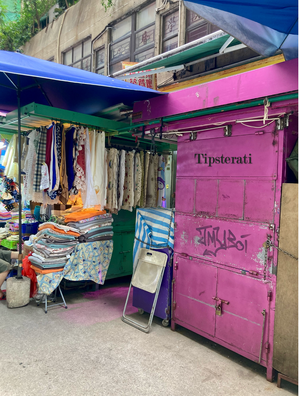
Meeting Leonard Siaw
We fell for Leonard Siaw’s murals the moment we stumbled across them as we wandered about Kuching. We were impressed by his dramatic compositions, by the lively, expressive faces he conjured up. He had managed to bring to life the past and we couldn’t help but study his murals closely and take photo after photo. Back at the hotel in the evening, still fascinated, we wondered aloud whether we could get in touch with him somehow to talk to him about his murals. But we were in Kuching for only a few days. What were the chances that we could contact him and arrange to meet? We are a fledgling magazine too. Would Mr. Siaw want to make time to meet us? At best, we thought we could contact him via social media and interview him over text. As it turned out, none of these questions mattered; or perhaps they mattered so much that they manifested the next day's events . . .
On our way to the Tun Jugah Foundation the next day, we noticed a large shophouse wall that had a partially completed mural on it. The style of it was unmistakably Siaw’s. There was a bright-green industrial boom lift parked before it. Could this be a new Leonard Siaw mural in progress? We went to investigate, but there was no one there. We wondered if he had taken a day off or was simply on a lunch break. We decided to come back again after our visit to Tun Jugah was over.
Two hours later, we returned and were excited to see a figure on the boom lift. We rushed forward and were delighted to find a tanned young man in a straw hat, who turned out to be none other than Leonard Siaw! His broad face was kindly and I think he was rather amused that we were such fans of his. He good-naturedly allowed us to interview him on the spot and what follows is a transcript of our conversation. Given that everything happened spontaneously, we were not exactly prepared with the most searching questions. Still, we hope you’ll find it illuminating to hear more about Siaw’s process and how these murals came to see the light in Kuching.

Interview Transcript with Leonard Siaw (This has been edited for clarity)
Z: What inspired you to paint these murals in Kuching?
LS: It’s about telling a story through a mural about certain people in a particular area of the city. Like here is Pandungan, and over there is Carpenter Street, and further down, India Street. There are certain areas that have a certain kind of, like, old business. We call it ‘sunset business’ in direct translation. Because after the elderly person ... when they pass away, the younger generation may not take over the business. So it is no more. For now, you can still see some tinsmiths clanking the steel in the street, but maybe another thirty years, no more. It’s, basically, to tell a story and also to connect the younger generation and older generation. For the older generation, it’s a memory for them. It’s a memory. And for the younger generation, it can be me or it can be a younger one, to tell them what actually existed before, because some I really don’t know. Because the moment I start painting [a mural] like this, that’s when I realise I know so little about this city. I know so little about this city, so I paint while I study more about this city. Not just painting; also mingle around with the shop owners and the people who live in the neighborhood.
The clanking of the tinsmiths. You can still find tinsmiths plying their trade around the corner from Siaw's mural that honours them: "The Symphony of the Tinsmiths." ©F.L. Blumberg




The murals inspired me to chat with the affable Mr. Ho Ching Hin, who comically advised me not to confuse him with Ho Chi Minh. ©F.L. Blumberg 2024
Z: How did you start with making all these murals? Did somebody ask you, commission you, or did you decide you want to do this?
LS: Either way. For this one, or Carpenter Street or India Street, I was approached by the mayor. So, I am thankful to have a person like him because he gave me 80% of artistic freedom. He’s like, ‘Oh, you go around and study around this area, ask around and see what kind of story we have. And then you visualise it.’ Other than that, other than this situation, for another one, for example, I can come up with a proposal and maybe get a team and propose [a project] to the government and let’s see if they are interested to sponsor us in a certain area. Like, Ten Miles [a suburb outside of the city], Ten Miles is probably half an hour drive from here, I paint a mural of Dayak ethnic women, five of them. It’s also their fallen tradition, the very last five of them. We call them the last 5 ring ladies.
Z: In fact, we just came from Tun Jugah. We were just learning about the Iban and the ikat weaving and bead-making. It’s also in some way, a sunset…a dying craft
LS: The dying … handmade… hand crafts
Z: We spoke to an artist even earlier today and she was saying that she really tries to teach the younger generation, but, you know, it gets more and more difficult.
LS: That’s how the industry progress. You can’t do anything. It’s up to them whether they are interested or not.
Z: Can I ask if you use any historical photos for reference for some of your murals?
LS: For this particular mural, I was provided a passport kind of photo. But this old man has already passed away, so I need to imagine him making tea just from that passport photo. It’s difficult.
Z: Yesterday, we saw the horse-racing [mural] in Pandungan. Was that also…We were thinking you really had to imagine…. Did you have some sort of photo you were working from?

LS: I went to Seven Miles, close to the airport. So I went there to get some inspiration, because the horse racing is still on, but probably less than five times a year. There is still some horse racing going on. But they don’t use the actual horse; they use ponies. I went there to take some photos.
Z: May we ask where are you from within…?
LS: Here.
Z: So you are from Kuching, within Sarawak. I think we saw the Carpenter Street ones first and your style. First of all, your faces, the way you do faces is fantastic. So expressive! We were really drawn by your faces. Then the style was interesting too. Like, I think those Carpenter Street ones depicting the clogmaker and the Dayak traders, are very block-like, very Cezanne-like, in a way. Is that an influence? What are your artistic influences when it comes to style?


©F. L Blumberg 2024
LS: You mean my strokes and colour usage?
Z: Yes
LS: I would say that it developed along the way. Because I didn’t purposely go and find my particular style. At first, I didn’t know what I want. So I observe wherever I go. I’ve been to West Malaysia. I’ve been to Penang, mingle around with people with more experience. Get lectured, or even get scolded, then I (laughter) ... That’s how I started.
Z: Do you have particular artists that you are inspired by?
LS: A lot. Michaelangelo is one of them.
Z: Yes, yes, understandably. Anyway, we were really very impressed. The expressions on the face, the drama of the scenes that you managed to create, the coolies by the well… that was also fantastic. We just found them very beautiful and we were talking about how do we contact you and we found you here today. I said this just last night that Leonard Siaw has no idea that we’re talking about him and how much we love his work and he has no idea that these two visitors…. And I have to tell you, it’s the truth...

LS: I’m thankful.
Z: …that you are already one of my favourite artists. I find you just really brilliant and extraordinary.
LS: I would say I have to do it in a way because that’s how street art connects people. Because when they see another human being in the picture, because I am using an existing subject, even though he’s already passed away. Some are still living. I use an existing human as a subject, so they can therefore connect with the viewer and have a deeper connection. Because I have been to Australia. It’s one of the street art capitals in the world. I was really impressed. I went about five years ago. I attended a street art festival. Most of them are hyper-realistic.
Z: Yes. And we saw that you have a couple of works on canvas in a Kuching gallery. Is that true?
LS: Yes, yes.
Z: You see, I’m a real fan!
LS: Have you been there?
Z: No, we have not been there. We saw it online. We just looked you up a bit. We were actually thinking…it’s such serendipidity that we, such fate that … we walked past here because we were going to Tun Jugah, and we said [because we saw the incomplete mural] is he possibly here? Maybe he’s at lunch (laughter). We were going to send you a message on Instagram, but this is just…. the first day I got here, I said we need to interview Leonard Siaw for our magazine. How is this going to happen? We’re just here for a few days.
LS: And we just met!
Z: I know, amazing, absolutely amazing! Thank you very much for your time. We really appreciate it.
LS: You’re welcome.
Z: We really just wanted you to know how appreciated you are as an artist.
LS: Thank you, thank you!
Leonard Siaw is on Facebook and Instagram.
Interested in visiting Kuching? Check out our previous posts on vintage tiles, the cats of Kuching and travel and food recommendations in our Tipsterati newsletter.



